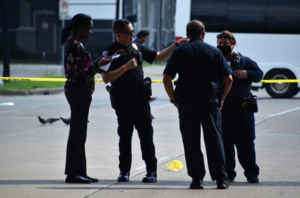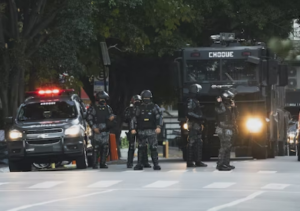Every agency has them… the officers that everyone wants to go through the door with. The ones that think, train, and breathe tactical proficiency. These officers instill a sense of confidence during critical situations. In addition to physical skills, they often possess the ability to think strategically in high-pressure situations. Through continuous training, they continue to hone their skills and strive for excellence. They serve as role models, advisors, trainers, SWAT members, and FTOs, and are often the backbone of a tactical response.
Unfortunately, when that critical call comes in, agencies don’t have the luxury of selecting those tactical officers as the first to arrive on the scene. Most often, it’s the closest on-duty officers who have a mixed skill set and are in a state of semi-readiness.
Take a quick inventory of your critical incident readiness. Is your average officer:
- Intentional in their mental and physical preparation for a critical incident?
- Understanding of how minor details can have significant effects on outcomes?
- Prepared to fill multiple roles, including supervisory responsibilities?
- Knowledgeable about policy/directives?
These are real questions that every supervisor, administrator, and trainer should ask themselves. Sometimes, the honest answers aren’t pretty.
Here are a few ideas to get your “average” officers quickly trained and better prepared to ensure a tactical response:
1. Tabletops – Don’t complicate it. Write a three-sentence scenario and ask several thought-provoking questions. Send it to officers in an email or meet with your team. There are also commercially available options that can help with this.2. Read an After Action Review – IACP publishes a good list of Active Shooter related after action reports at https://www.theiacp.org/after-action-review.3. Have Officers Teach Each Other – Exploit existing skill sets and have officers teach each other. For example, take 10 minutes to have a tactical-minded officer give a building search refresher.4. Provide Checklists – Surgeons, doctors, and pilots use them, and so should we. Ensure officers keep checklists in the same spot in a vehicle so anyone can grab them. Passenger-side window visors are easily accessible and typically hold paperwork. Have officers review them regularly.5. Policy and Directives Review – It’s only as painful as we make it. Incentivize policy review and make it fun. Be creative and your officers will appreciate it.6. Shift Briefing – Sergeants are often trying to find material to teach their officers during shift briefing. Have them go over some items in this section or give them rapid critical incident refresher training.7. Informal Debriefing – Right after a serious call, debrief it. Ask a few critical questions and turn story time into training. Build this into your agency culture.
As law enforcement administrators, it’s our responsibility to ensure each of our officers is well-prepared for critical incidents. Keep it simple, document your training, and make it a priority.


